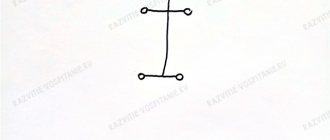Veils
The skin of birds is practically devoid of sebaceous and port glands. All that remains is the coccygeal gland, the secretion of which lubricates the feathers to protect them from moisture and increase aerodynamics.
Horny derivatives of the skin are feathers; they cover the body of birds, protecting and ensuring flight. There are contour and down feathers, which differ in structure and function.
Bird made of cardboard and paper
To create a children's craft, you need to prepare a template in the shape of a bird, cardboard, and colored paper. If you want to get a more voluminous and embossed bird, you can use multi-colored crepe. Instructions on how to make a bird craft:
- Using the prepared template, cut out a bird figurine from cardboard and colored paper.
- Glue colored paper or crepe onto a cardboard base.
- Make a hole in the top of the bird.
- Thread a thread into the hole and hang the figurine on the Christmas tree, above the baby’s bed or on a hook.
You can decorate the figure in various ways: original painting, modular fastening of parts, decoration with beads.
Respiratory system
The ability to fly was determined by the special structure of the respiratory system. The lungs are spongy and consist of alveoli intertwined with capillaries.
Some bronchi, without dividing into bronchioles, extend beyond the lungs and form air sacs in the body cavity. These formations provide breathing during flight.
Air enters the bags when the wings rise in flight, and when lowered, it is squeezed out into the lungs.
Propulsion system
Birds' muscles allow them to perform complex movements with a high degree of coordination. The organs of movement of flying birds are wings.
The pectoral muscles are the most developed (up to 1/5 of the total body weight).
Birds that have lost the ability to fly have powerful leg muscles that allow them to run quickly on the ground.
Circulatory system
In representatives of the class of birds, a separation of arterial and venous circulations appears for the first time.
The heart has four chambers, so venous and arterial blood pass through it without mixing. The consequence of separation is intense gas exchange and constant body temperature, that is, warm-bloodedness.
Digestive system
The high metabolism of birds is supported by a digestive system of a specific structure. Food captured by the beak travels through the esophagus into the crop, where it swells and begins to be digested.
The anterior section of the stomach is glandular, where the chemical breakdown of nutrients takes place; in the second section, the muscular section, mechanical grinding of food masses takes place. Afterwards come the duodenum and small and large intestine, which opens into the cloaca, along with the ducts of the excretory and reproductive systems.
Digestive enzymes are synthesized by the pancreas and liver.
Felt wall applique
A colorful applique on the wall can highlight any interior style. To work you will need felt of several colors, cardboard, scissors, threads, needles, templates for the main parts. Instructions on how to make a bird yourself:
- Cut out the main parts from felt - the wings, body, head and tail of the bird.
- Using the same template, cut out parts from cardboard.
- The details are sheathed along the contours with large decorative seams.
- Glue each piece onto the prepared cardboard base.
- Connect the parts together using hand stitches.
A bird can be represented as a figure with open wings (for example, an eagle). In this case, the felt fringe on the wings, freely flowing down, will look original.





